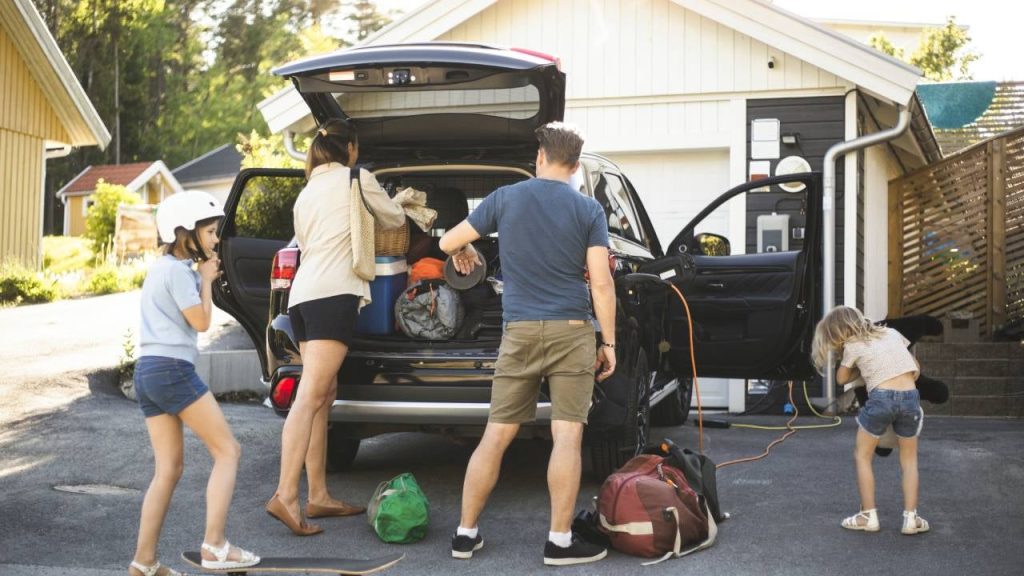Key takeaways
- Regions Bank is best if you’re looking to finance an electric vehicle (EV) or a pricier vehicle.
- Bank of America is an attractive option if you’re purchasing through a dealership.
- While both have physical branches, Regions is only available in 15 states, while Bank of America is available nationwide.
Applying for vehicle financing from a trusted bank often means expanded customer service, in-person support and a range of funding options. Regions Bank and Bank of America offer similar experiences when funding new or used car purchases and refinancing car loans. Financing with Regions Bank is best for borrowers looking to finance an expensive vehicle or secure an EV loan, while Bank of America is better for those who plan to purchase through a dealership.
Regions Bank vs. Bank of America at a glance
Consider each bank’s specific offers beyond the annual percentage rate (APR) to decide which best serves the needs of you and your future vehicle.
Regions Bank |
Bank of America |
|
|---|---|---|
| Bankrate score | 3.7 | 3.7 |
| Better for | Large loans and EV purchases | Financing through a dealership |
| Loans offered | New and used, private party, refinance | New and used, refinance, lease buyout |
| Loan amounts | $5,000–$125,000 | Starting at $7,500 |
| APRs | 7.24%-16.99% | Starting at 5.79% |
| Loan term lengths | Not Specified | 48–72 months |
| Fees | Not specified | No application, documentation or prepayment fee |
| Minimum credit score | Not specified | Not specified |
| State footprint | 15 states | 50 states and the District of Columbia |
| Time to funding | Not specified | Not specified |
| Autopay discount? | Yes | Yes, for Preferred Rewards members |
| Refinancing restrictions |
|
|
-
Better for: Large loans and EVs
Serving customers across the Southern and Midwestern United States, Regions Bank provides a wide range of products, including deposit accounts, mortgage and auto services. New auto loans have a starting APR of 7.24 percent. This is slightly lower than the current national average interest, which stands around 7.47 percent, according to Bankrate data from January 2025. Regions Bank also offers large loans up to $125,000, and it has private party loans and EV loan options with discounted rates.
However, the Alabama-based bank has minimal information on its website regarding income or credit requirements. To find out more information, you must contact the bank or move forward with an application.
-
Pros
- Complimentary gap protection: If you finance a new or used vehicle through Regions, you’ll get free guaranteed asset protection coverage. This coverage isn’t typically complimentary.
- Autopay discount: Setting up automatic payments from a Regions checking account nets you 0.25 percent off your interest rate.
- High loan-to-value ratio: You can finance up to 110 percent on private party purchases and 130 percent if buying from a dealership.
Cons
- Limited state availability: These loans are available in only 15 states, concentrated in the Midwest and South.
- Refinance restrictions: Your car must be under seven years old. Many lenders, including Bank of America, allow financing for vehicles up to 10 years old.
- No prequalification: You’ll have to go through the application process — and take a credit score hit — to see the rates you qualify for.
-
Better for: Financing through a dealership
One of the largest banks in the country, Bank of America serves borrowers in all 50 states. The institution offers new and used auto loans as well as lease buyouts and auto loan refinancing. While it previously offered them, Bank of America discontinued its private party auto loan option.
Bank of America has many advantages, especially for Preferred Reward members, who can take advantage of up to 0.50 percent off your APR. It also offers a low starting rate — much lower than many other lenders, including Regions. And unlike Regions, you are able to apply for preapproval and check your rate in advance with 30 days to shop for cars.
-
Pros
- Long shopping window: Your rate is good for 30 days, allowing you to shop for vehicles at multiple dealerships as a cash buyer.
- Greater loan diversity: Regions Bank doesn’t offer a lease buyout loan, but Bank of America does.
- Low starting APR: Bank of America’s lowest APR compares favorably to both the national average and what other big banks offer.
Cons
- Discounts for members only: You will need at least $20,000 in combined investment and deposit account funds to qualify for a 0.25 percent rate discount — or $100,000 for the full 0.50 percent off.
- Unspecified credit requirement: Like many banks, Bank of America doesn’t share details about the credit score you’ll need to qualify.
- No private party loans: Bank of America discontinued its private party lending.
How to choose between Regions Bank and Bank of America
The best choice depends on where you live, how much you want to spend and whether you already have an account.
If you’re looking to purchase, you’ll find flexible loan amounts and enticing APRs for EV loans with Regions. However, Bank of America offers lower starting APRs and has a bigger state footprint. On the refinancing side, Regions offers a larger range of funding amounts but more vehicle restrictions than Bank of America.
APR range
Bank of America has an attractive starting APR of 5.79 percent, although Regions Bank also offers a competitive starting APR of 7.24 percent. It also has a low maximum APR of just 16.99 percent — Bank of America does not specify the maximum APR you could be charged. Keep in mind that you will likely need to have a good credit score, a strong income and meet other eligibility requirements to qualify for the lowest rates.
Minimum credit score
Regions Bank and Bank of America are both comparable in this category, as neither specifies a minimum credit score. However, you will likely need at least decent credit, typically a good to excellent credit score of 670 and higher, to qualify for an auto loan.
Repayment terms
Regions Bank does not specify its loan terms, so you may have to start the application process to see what terms are available. Considering Regions Bank does not advertise a preapproval process, submitting an application could lead to a hard credit pull. If you aren’t sure, reach out to a customer service representative before starting.
Bank of America is more forthcoming with loan terms, with auto loans available between 48 and 72 months. This is a standard offer, although there are some lenders that offer terms up to 84 months if you need a longer term.
Loan amount
Regions Bank covers a wide loan range of $5,000 to $125,000, whereas Bank of America has a starting loan of $7,500. For most borrowers, the minimum amount won’t matter — especially if you’re buying from a dealership. However, be sure to ask about the loan-to-value ratio and the maximum amount you are able to borrow. With either lender, you will likely be able to finance most cars, regardless of the sticker price.
Fees
Bank of America is more transparent about fees and does not have an application, documentation or prepayment fee. Regions Bank does not specify its fee schedule, so be prepared to discuss this with your loan officer if you choose to finance through Regions.
The bottom line: Which lender is better?
Securing a new or used auto loan from Bank of America comes with discounts if you’re an account holder, and the bank focuses on dealership financing. But Regions is a better option if you plan to finance an expensive vehicle like an EV. However, it’s very important to keep in mind Region Bank’s 15-state footprint versus Bank of America’s 50-state one. Further, Bank of America has a lower starting APR, whereas Regions Bank has a wider lending amount. You’ll need to assess which option works the best based on your lending needs, location and preferences.
If you’ve had past credit challenges, you may be denied financing or receive a steep rate from these lenders. Try checking out our picks for bad credit loans.
Compare more lenders before applying
Since Regions Bank does not allow for prequalification, it may make sense to look elsewhere before you begin applying. Try to compare at least three different lenders to find the one that fits your needs best. You can also find other lenders that offer large borrowing amounts:
Read the full article here


